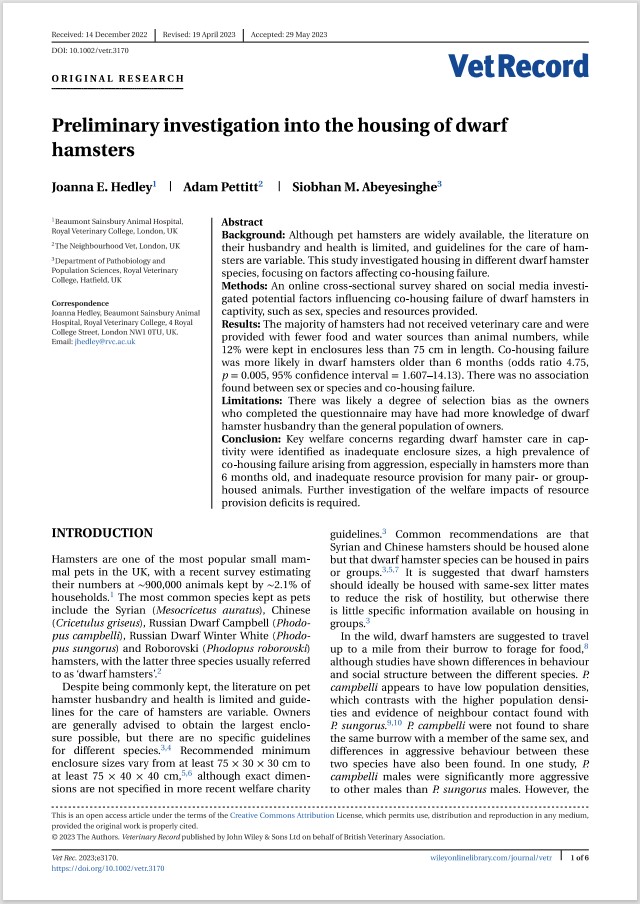RVC Study Shows Dwarf Hamsters Should Be Housed Alone After 6 Months Old

Many pet shops recommend that Dwarf hamsters can be housed together, but the community has commonly disagreed with this advice and there have been many reports of lethal fighting among Dwarf hamsters that are kept in the same enclosure.
The study says “The current advice provided for the housing of pet dwarf hamsters is clearly inconsistent with the findings of research on their natural history, with implications not only for enclosure size and guidance on housing with or apart from other individuals but also regarding the provision of shared resources to species that do not naturally utilise these together. Evidence based guidance is urgently required for appropriate dwarf hamster care”
Regarding Russian Dwarf hamsters, the study says that in the wild “P. campbelli were not found to share the same burrow with a member of the same sex.”.
Pet shops often recommend that Russian Dwarf hamsters of the same sex can cohabit in pairs or groups but this is not how they live in their natural environment.
“High prevalence of co-housing failure arising from aggression”
The study says “Key welfare concerns regarding dwarf hamster care in captivity were identified as inadequate enclosure sizes, a high prevalence of co-housing failure arising from aggression, especially in hamsters greater than 6 months of age, and inadequate resource provision for many pair or group housed animals. ”
The survey analysed 248 Dwarf hamster keepers, “with 148 (59.6%) always having been housed individually by their owners and 25 (10.1%) always having been housed with others.”. “The remaining 75 (30.24%) hamsters had been previously housed with others but were subsequently housed individually. Of these, 65 were separated due to agonistic behaviours and 10 for other reasons, such as to avoid breeding or due to a companion’s death (Figure 1). Agonistic behaviours that were reported included fighting, biting, screaming/squeaking and scratching, with many hamsters displaying multiple behaviours (Figure 2). “
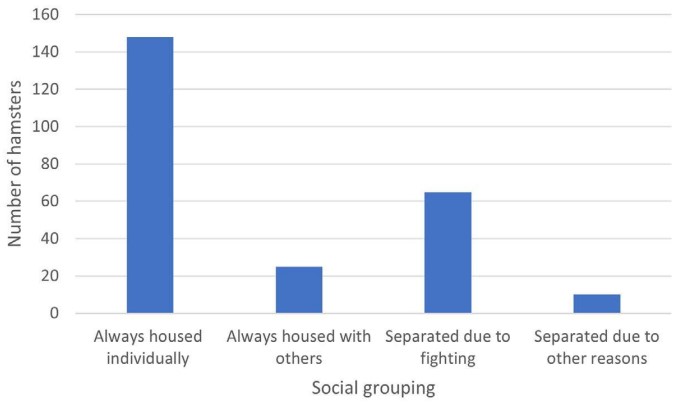
Social Grouping of Dwarf Hamsters in Study
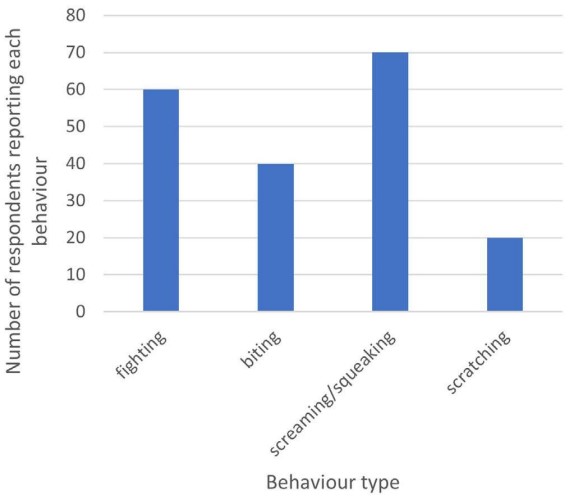
Agnostic Behaviours in Dwarf Hamsters Study
The questionnaire was distributed among hamster keepers who may already know about proper hamster keeping for dwarf hamsters, so if the questionnaire was spread across the general population of those who have only followed pet shop advice the results could have been even more alarming.
The study says” By distributing the questionnaire on primarily dwarf hamster and veterinary community–focused Facebook pages, there was likely a degree of selection bias as the owners who completed the questionnaire may have had more knowledge of dwarf hamster husbandry than the general population of dwarf hamster owners.”
Titled “Preliminary Investigation into the housing of dwarf hamsters” this study is the first of it’s kind focusing on co-housing failure and it also found areas for further investigation, it says “Future studies should attempt to select a more varied population of owners from different sources, and achieve a larger sample that may be more representative”.
The survey was conducted between 7th May and 8th July 2020. The cage size recommendation of 75cm was used as a benchmark and we assume that this is referred to as it was a previous recommended size from The RSPCA. Since the study was published welfare charities such as PDSA and Bluecross now recommend that hamsters should be housed in a cage size of at least 100cm x 50cm.
Significant Association Between Age Group and Co-housing Failure
Pet Shops say Syrians should be separated after 6 months but Dwarf hamsters also experience a high level of co-housing failure after 6 months of age:
“Comparing those 65 hamsters separated due to agonistic behaviours with the 25 hamsters currently living with others, there was a statistically significant association between age group and co-housing failure (p = 0.005), with hamsters greater than 6 months of age being 4.75 times (95% CI 1.597–14.126) more likely to have experienced co-housing failure than those less than 6 months of age. There were no statistically significant associations between sex or species and co-housing failure (Table 3)”
Co-Housing Failure and Species of Dwarf
Russian Dwarf Campbell – 65.7%
Russian Dwarf Winter White – 85%
Roborovski – 73.3%
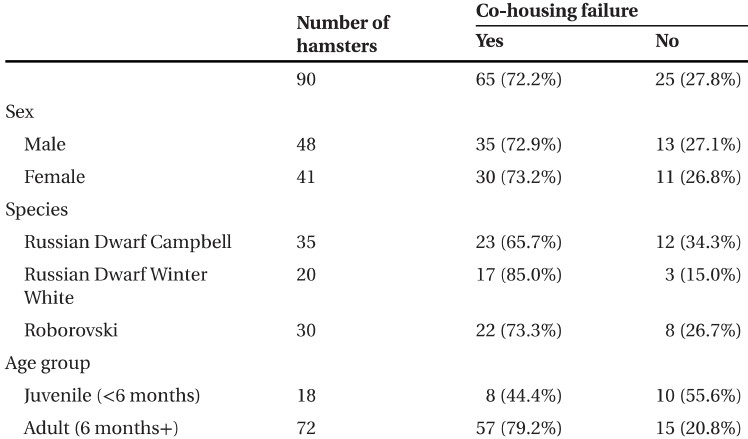
Co housing Failure of Dwarf Hamsters, Species and Age
The study says ” It should also be noted that the majority of reported co-housing failures occurred due to aggression, which relied on owners accurately observing and recognising aggression. As these species are nocturnal, it is possible that some agonistic behaviour, particularly more subtle interactions that may still be associated with social stress, could have been missed and thus problems with co-housing were underestimated.”
A Previous Study Showed an Alarming Amount of Bite Injury’s
The study says” In a recent study reviewing clinical records from 16,605 pet hamsters, bite injuries were the third most common disorder recorded for hamsters presenting to veterinarians in primary care practice, so inter hamster aggression is obviously a widespread problem”
The Previous study where the RVC analysed the veterinary records of 4000 hamsters was reported by Hamster Welfare in this article.
The Study Concludes:
“A high prevalence of co-housing failure, especially in hamsters greater than 6 months of age, and provision of fewer resources than animal numbers for a large proportion of pair or group-housed animals, which is likely to risk increased aggression, particularly in relation to food. Further research investigating the effects of enclosure size, resource provision, and age on pet dwarf hamster behaviour is critical, while further investigation of species differences is recommended so that evidence-based recommendations can be established for these understudied species. Based upon the current findings and in the absence of empirical data, it is advocated that guidance to owners emphasises the importance of veterinary care, adequate enclosure size, sufficient resource provision and separation of hamsters by 6 months of age to reduce the potential risks of health issues, abnormal repetitive behaviour and within–group aggression and to promote dwarf hamster welfare.”
The Wrong Pet Shop Advice Could Make You Break The Animal Welfare Act
In the natural environment not only do Dwarf hamsters prefer to live alone they also feel the need to protect their own territory. Pet stores recommending to keepers that that they can house two or more of the same sex dwarf hamster in the same territory is arguably a breach of The Animal Welfare Act which requires a keeper to protect their animal from Pain, Injury and Suffering.
Pet shops often recommend that if you keep dwarf hamsters together they should be from the same litter. This is different to what occurs in the natural environment.
The study says ” The majority of hamsters were also reported to be litter mates, so in natural conditions, they would have dispersed from their parent’s burrow from the point of weaning, (at approximately 18 days of age)”
“There was no association found between sex and co-housing failure, but as both male and female dwarf hamsters have been shown to exhibit territorial aggression, this is perhaps unsurprising.”
The study shows that in the wild aggressive behavior has been seen among all species of same sex dwarf hamsters and says:
“The current advice provided for the housing of pet dwarf hamsters is clearly inconsistent with the findings of research on their natural history”.
It is a best practice for a keeper replicate how a species chooses to live in the wild. From a Dwarf hamsters point of view sharing a territory with another hamster is a scary way to live where they are susceptible to being attacked and bullied in a space where they are trapped, we report about this on our page about how hamsters like to live alone.
In the wild when a hamster steps into another hamsters territory they will often defend their territory and fight. There is a misconception that dwarf hamsters like the company of another dwarf hamster in their territory. It is a strict rule for Syrian hamsters to be housed alone and the same issues seem to apply for Dwarfs, regardless of their different species. There are far and few cases of professional hamster keepers successfully housing dwarfs together, using large tanks, multiple hides and wheels for each hamster. In a small pet shop bought cage adequate resource provisions simply isn’t possible. Pet shops need to take note and realise that in a domesticated environment it is cruel to keep two or more of the same sex dwarf hamsters confined together in a small space.
Mixed Messages On In Store Labels
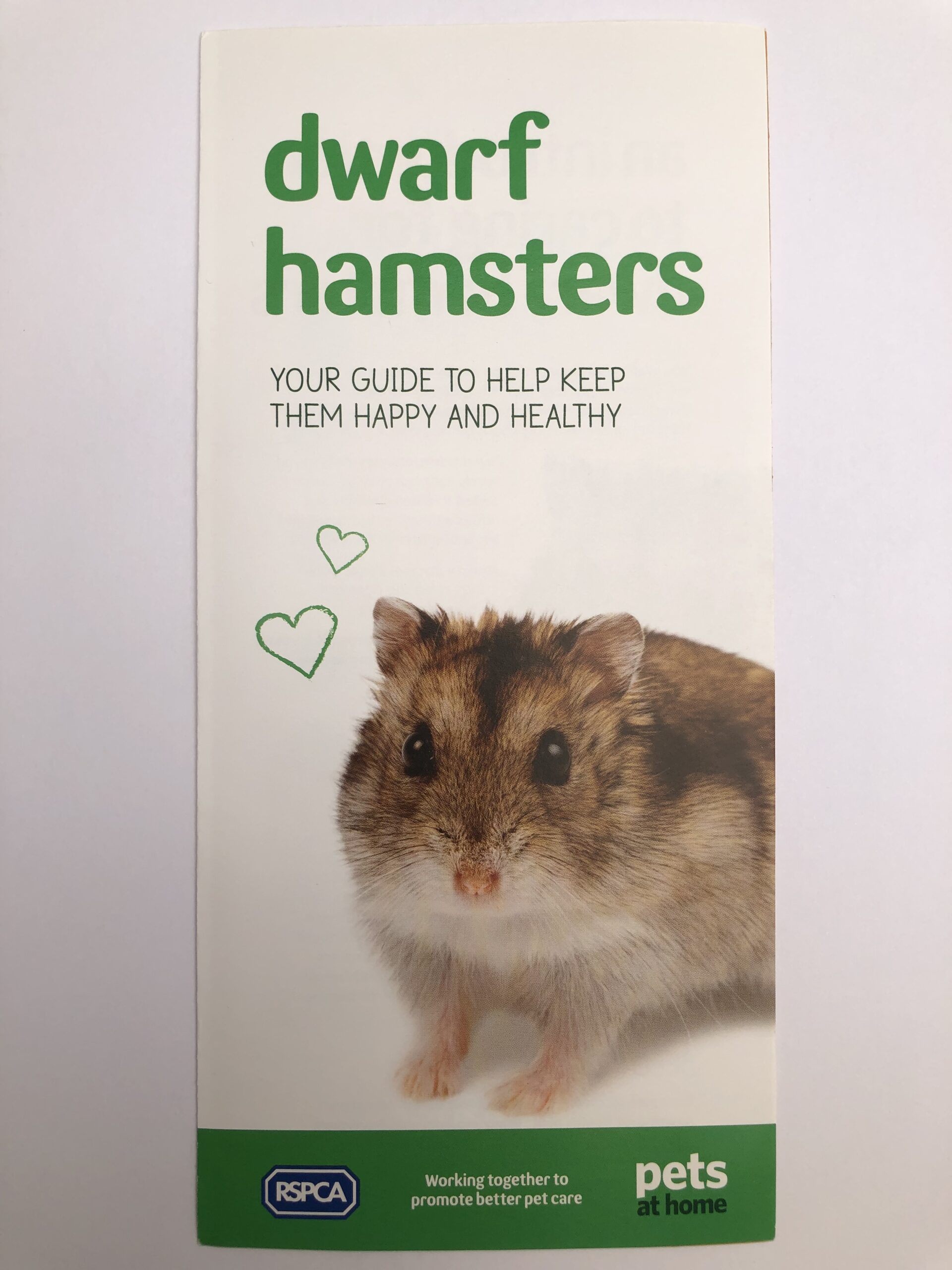
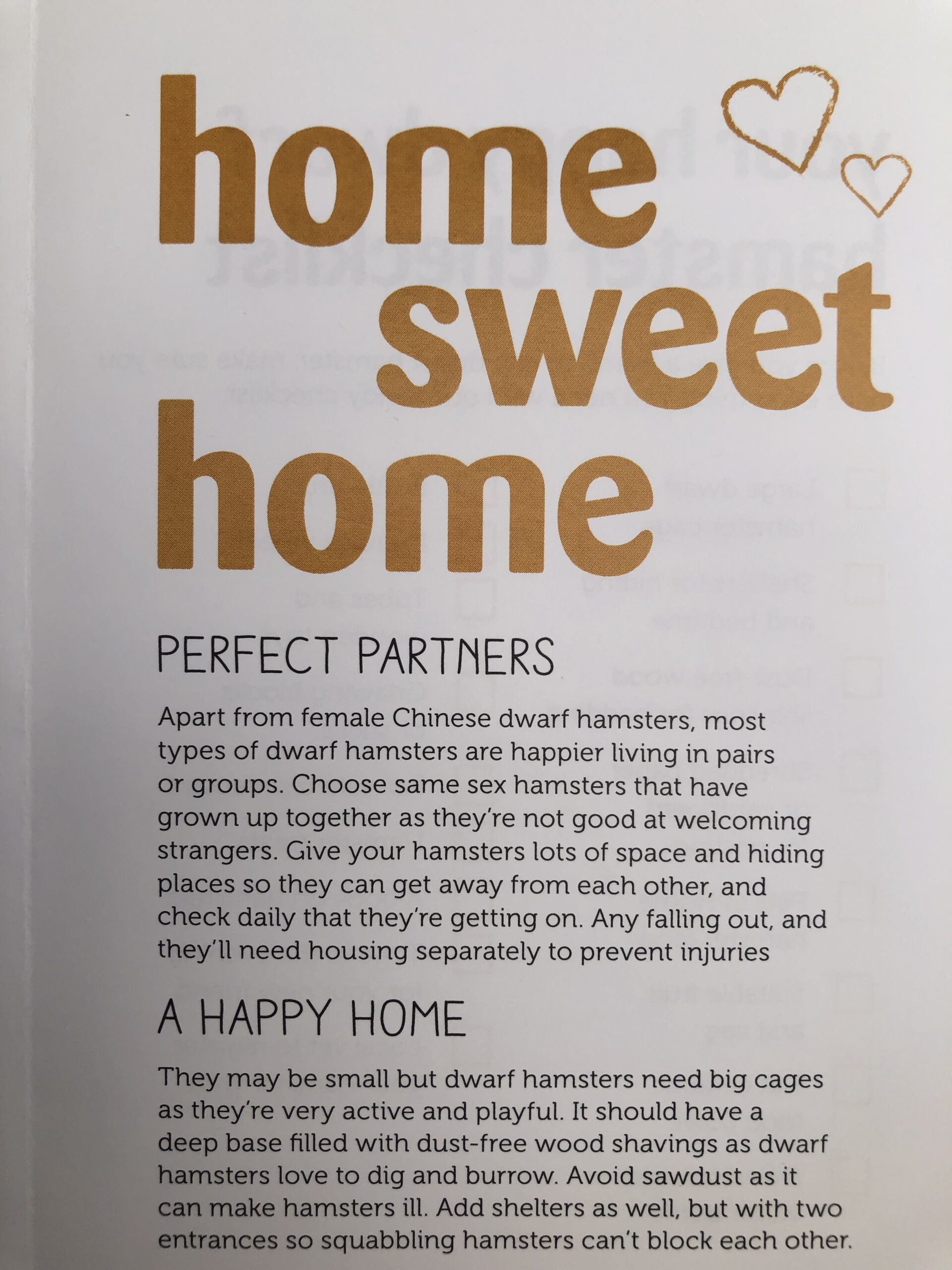
The Pets at Home “Working Together” guide with The RSPCA contains what seems to be outdated advice which is different to labels in store.
In recent times it seems Pets at Home have attempted to improve their housing information on the Dwarf hamster labels but there still seems to be a mixed message:
Label for Syrian hamsters Says: “We must live alone when older”. Information that is commonly accepted.
Label For Roborovski Dwarf hamster: “We can live in pairs or Groups”. This still suggests that you can keep Robo’s together.
Label for Russian Dwarf hamster: “We prefer to live alone when older” For Syrians it’s a “must” For Russian Dwarf it’s “prefer”, there needs to be a line drawn, not optional for the customer. There is a mixed message between the in-store label that says they “prefer to live alone” and the joint leaflet with The RSPCA that says “most types of dwarf hamsters are happier living in pairs”!
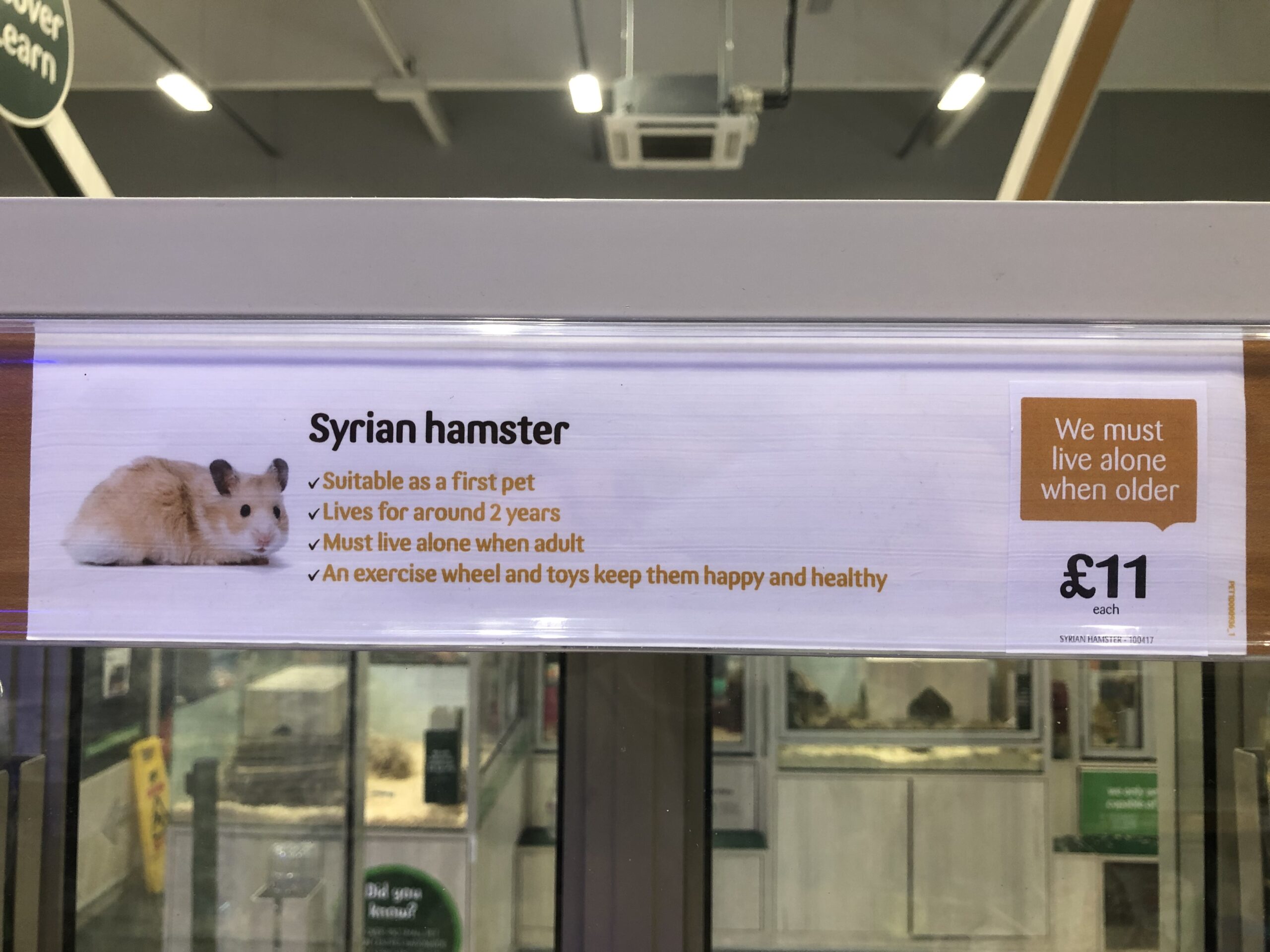
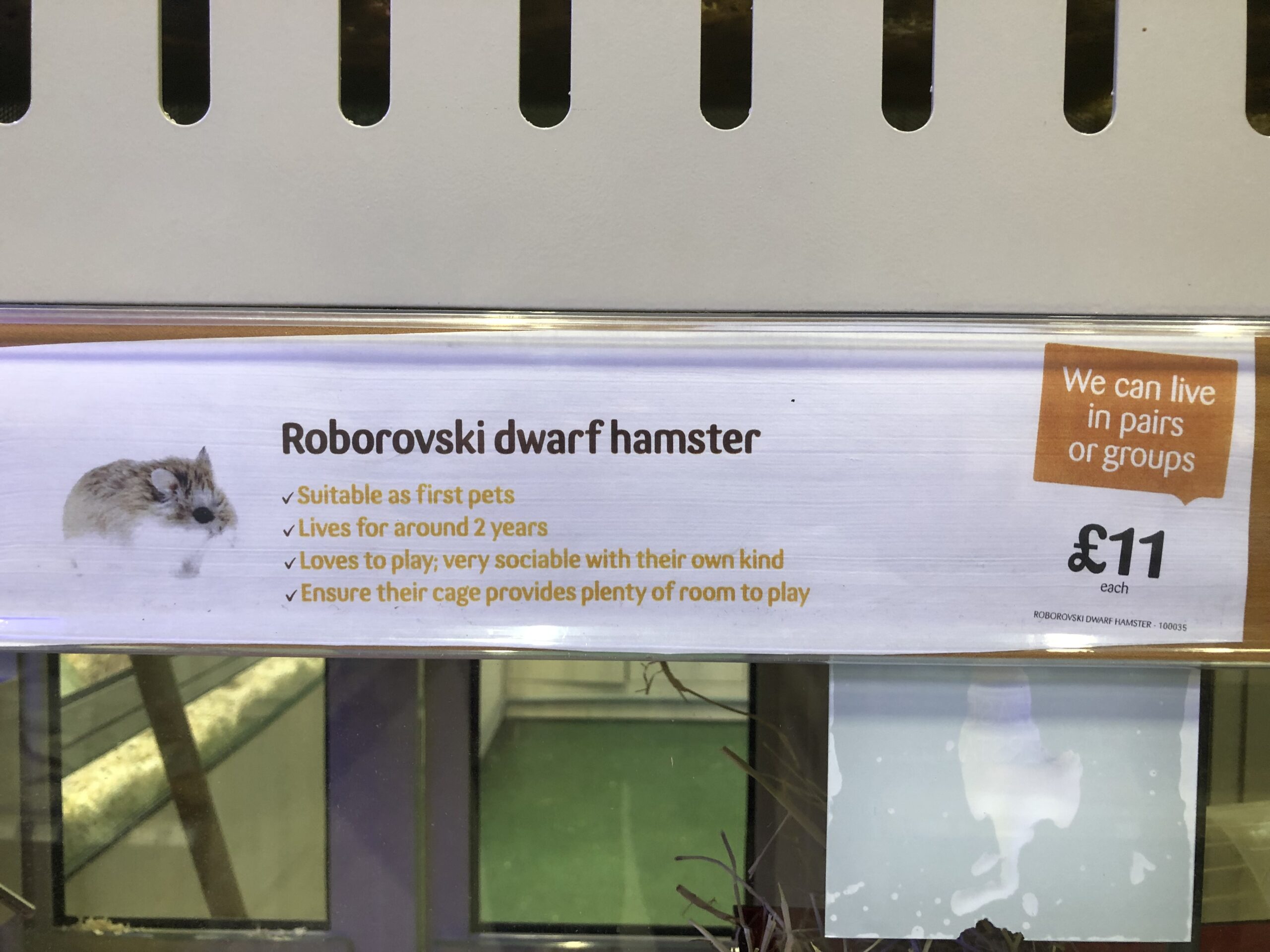
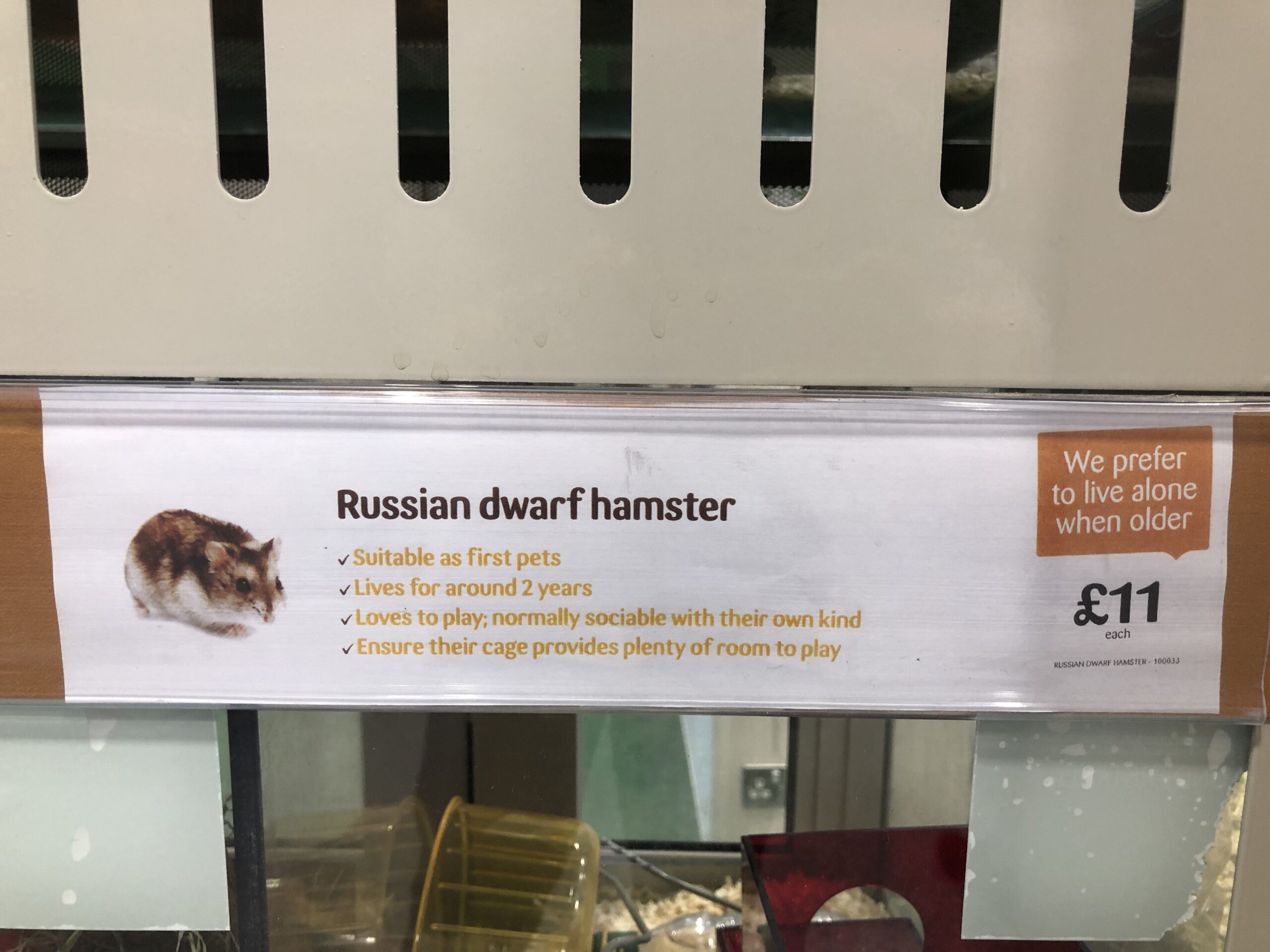
Lethal Advice From The RSPCA
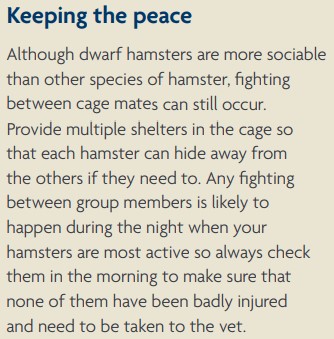
Taken from The RSPCA PDF – How To Take Care of Your Hamster
The RSPCA’s guide from their website does bring caution to housing dwarf hamsters together and highlights how fighting can occur. However, it is not much for the prevention of cruelty to say “always check them in the morning to make sure that none of them have been badly injured and need to be taken to the vet”. The advice is your hamster may get badly injured and if that happens take them to the vet so they can possibly patch them up!
The Argument to House Dwarf Hamsters Alone
- In the natural environment Russian dwarf hamsters were found to not share a burrow.
- Dwarf hamsters leave the nest at a young age, so the advice you can keep same litter pairs happily in groups is not what occurs in the wild.
- All species of dwarf hamster show similar levels of agnostic behaviour, so why do different captivity rules apply for different species.
- High level of agnostic behavior is the same characteristic as Syrian Hamsters where strict advice says they must live alone.
- Dwarf Hamsters are naturally territorial, keeping two or more confined in a small space causes hamsters to fight and defend their territory.
- For a hamster to be housed with a more dominate aggressor they must feel trapped, bullied and scared for their life.
Click on The PDF to Access the full Study
Full study can also be found here:
© Copyright 2022 HamsterWelfare.com

